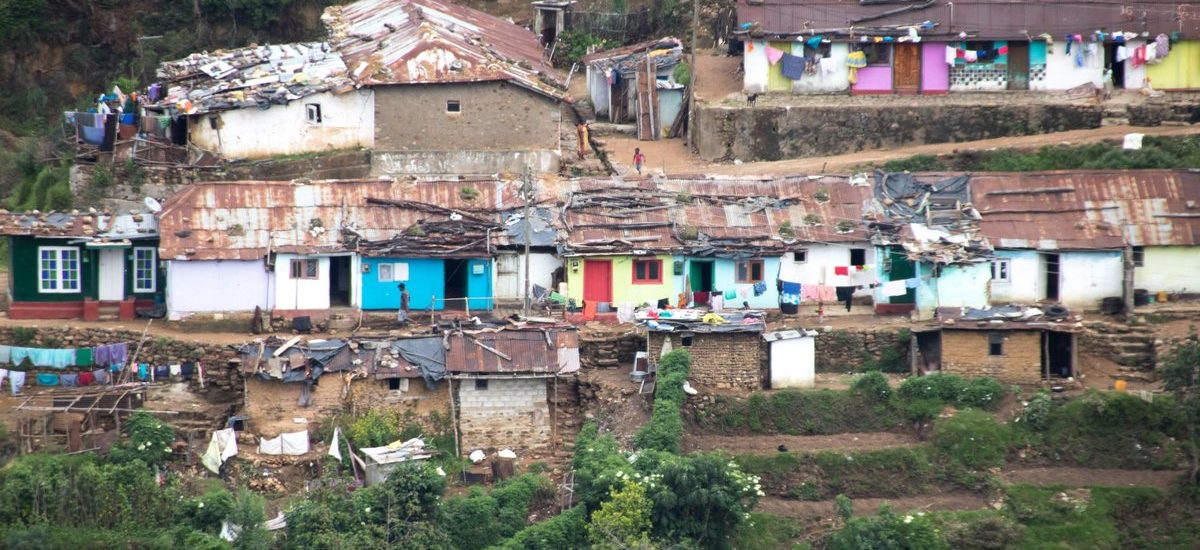Families of estate workers, many of whom have a number of mouths to feed, are increasingly skipping meals on a daily basis. Some even manage with only one meal each day. Due to the high cost of rice and the scarcity of flour, estate inhabitants are in a desperate search for money to eat.
The community eat roti made with flour and drink plain tea as their main meals. At present, a kilogramme of wheat costs between Rs 400 and 500 on the black market that the scarcity of flour has generated. After decades of struggle, estate dwellers now make Rs 700 per day after deductions for EPF and trade union contributions from the Rs 1,000 daily flat salary rate.

The anger among the community of plantation workers is still not fully handled, though. The families assert that there have been reports of child malnutrition in the estates. As estate workers are devoted but underpaid employees who help expand one of Sri Lanka’s biggest exports, the issue has not yet been addressed.
It has been two months since Pushpa Rani, a 59-year-old employee at Madawatte Estate in Maskeliya, and her family of nine have received three meals a day. She lamented how the rising cost of kerosene and household products had turned everyone’s lives from terrible to miserable.
“We get paid Rs 1,000, but after Sandha and the EPF, an individual only receives about Rs 700. Most often, we eat roti. It is a staple in our diet. My family consists of ten people, including me, and we require 1 kg of wheat flour to make ten rotis for a single meal. Wheat flour is available in Maskeliya, and it costs between Rs 400 and 500. That means we only have Rs 300 in hand after purchasing 1 kg of flour. This is only for roti that is made for a single meal,” she wailed.
Further, Rani claimed that the cost of vegetables in Maskeliya and Hatton is so high that she is unable to provide her children with the nutrition they require. “My son and daughter fall sick regularly. They are really skinny, and I take them to the hospital at least twice a month,” she said.
With a dozen children to feed, Suppaiyya from Rajamale Estate said they are in desperate need of help and that if an immediate solution is not found, the situation may result in social unrest. According to his salary calculations, they can only manage one meal, and that too only if the roti is eaten alone.
“If we collect 15 to 20 kg of tea leaves each day, our daily pay is approximately Rs 750 to Rs 800. Feeding our children on this budget is quite challenging due to rising food prices. We belonged to two unions, but both the Government and those organisations are useless,” he lamented.
As a veteran tea plucker, he had grown comfortable eating roti, a flatbread made of wheat, as they could easily transport it to the estates and eat it there.
Chronic malnutrition
According to Vice President of Protect Union (PU), K. Maithilee, childhood malnutrition is increasing in the estate sector due to the nation’s ongoing economic crisis.
The Vice President claimed that the daily earnings of estate workers were insufficient to cover expenses because of the inflation of necessities and other goods.
With their meagre pay, she said estate employees struggle to feed their kids three meals a day and send them to school. Malnutrition is now a lurking danger in the estate sector. According to Maithilee, children in estates are at risk of losing their prospects for a quality education.
She also appealed to the Government and community leaders to pay attention to this matter and take the necessary steps to put special plans in place to offer benefits to kids growing up in estates.
Failure to do so will negatively affect the estate community’s way of life. To get the Government’s attention and secure the protection of a community that is advancing the economy, trade unions that represent the estate community must speak out, Maithilee added.
Government initiative
Meanwhile, to address the shortage of wheat flour, Sathosa Chairman, Pasanda Yapa Abeywardena said Lanka Sathosa agreed to distribute wheat flour to the plantation sector at a retail price of Rs 310 per kilogramme.
Measures were taken to provide wheat flour and other food goods without restriction to consumers visiting the Hatton Sathosa branch. Thus, a kilogramme of imported white rice costs Rs 185, a kilogramme of Nadu rice costs Rs 194, a kilogramme of local white rice costs Rs 210, a kilogramme of local Nadu costs Rs 218, a kilogramme of red rice costs Rs 210, a kilogramme of brown rice costs Rs 310, a kilogramme of red lentils costs Rs 429, and a kilogramme of Nuwara Eliya potatoes costs Rs 398.
The regulatory authority of the Sathosa branch claimed that a sizeable number of clients come to buy the food items every day as a result of the unlimited release of essential food items, such as Sathosa wheat flour.
Meanwhile, Minister of Trade Nalin Fernando promised that there would not be a scarcity of wheat flour in the market in the future, adding that there is no need to raise the price of wheat flour, and said setting a control price for wheat flour at this time would be impracticable.
The Minister requested a formal report on the amount of wheat flour needed for local consumption over the next six months from the Ministry of Trade. Therefore, the minister indicated that it is possible to ask the pertinent large-scale wheat flour production enterprises to release the necessary amounts of wheat flour to the market for future use.
Minister Fernando also pointed out that a request has already been made to large-scale wheat flour production companies to increase their wheat flour production capacity.
Duopoly wheat flour importers in crisis
the two major firms that supply wheat flour in Sri Lanka have not made enough flour available to the market, compelling the plantation community to purchase it at a massive price from private stores.
The cost of a 450 g loaf of bread and other food, they claimed, had increased at varied rates, despite the bakery owners’ claims that they must buy flour from wholesalers to fulfil their baking requirements.
According to Hatton Restaurant and Baking Owners’ Association President, Fasir Mohommed, traders hoard wheat flour and sell it at a higher price when there is a market shortage. However, traders claim that a 50 kg bag of wheat flour is only sold at a maximum wholesale price of Rs 18,000 to Rs 20,000.
“Wholesalers sell wheat flour at varied prices as there is no price regulation for wheat flour. A bun costs Rs 110, a fish bun costs Rs 140, and a 450 g loaf of bread costs Rs 300–320. Although there were many people employed in the bakery sector in the Nuwara Eliya District, many have chosen to leave because of the high cost of wheat flour and the resulting price of bakery goods, which is unaffordable for most people,” he said.
Emerging wheat flour scarcity
Minister of Trade and Consumer Protection Nalin Fernando said the nation is expected to receive wheat flour from Turkey and Dubai in the coming days. He said the importers would bring in the required flour. The minister added that dealers selling eggs at exorbitant prices had been targeted in recent raids.
The importers of wheat flour assert that the nation will have a severe bread shortage within the next two to three weeks. They note that despite the Minister of Trade’s declaration that wheat flour is adequate, importers have been unable to bring in wheat flour, as India has banned its export.
This forced importers to stop bringing wheat flour from India.
The Consumer Affairs Authority (CAA) has launched a campaign to arrest wheat flour hoarders in the interim.
Accordingly, district-level raids would be conducted, according to CAA Chairman Shantha Niriella. CAA personnel have already been able to find locations where hidden wheat flour inventories were held in a number of locations, including Gampaha. Therefore, measures were taken to allow the wheat flour to be sold on the wholesale market.
The CAA Chairman stressed that anyone with information about wheat flour hoarders can contact the hotline 1977.
UNICEF report
A statement by George Laryea-Adjei, UNICEF Regional Director for South Asia, after visiting Sri Lanka, said children are going to bed hungry, unsure of where their next meal will come from, in a country which already had South Asia’s second highest rate of severe acute malnutrition.
“Children need to be placed squarely at the heart of the solution, as the country works to resolve the crisis. Continuity of learning must be ensured for girls and boys of all ages, so they can prepare for their future and are shielded from the threats of child labour, exploitation and gender-based violence. Central and primary health services must be prioritised, to protect women and children against life-threatening diseases and malnutrition. What I saw in Sri Lanka is a caution for other countries in South Asia,” he said.
He also said acute economic precarity and inflation across South Asia is poised to further threaten the lives of children – in a region which was already home to one fifth of the world’s extreme poor and profound hardships and inequities impacting children’s health, learning and safety, and in a region which was severely impacted by Covid-19.
“If we do not act now to protect children against the worst effects of the global economic downturn, the children of the world’s most populated region will be plunged further into poverty – and their health, nutrition, learning and safety compromised. We cannot let children pay the price for crises not of their making. We must act today to secure their futures tomorrow,” he further said.
Ceylon Today -September 17, 2022
By Thameenah Razeek
